As a conscientious consumer, understanding the ins and outs of cashing cheques in Mexico is vital.
We'll cover everything from identifying the types of cheques accepted by Mexican banks and financial institutions to deciphering fees and wait times. Whether you're new to cheque transactions or seeking to maximize your rights as a consumer, this article is your key to unlocking the world of cheque cashing in Mexico.
Conversion Fees: Banks and financial institutions charge conversion fees when cashing foreign cheques. These fees can vary, impacting the amount you receive.
Processing Charges: Additional processing fees may reduce the final payout.
Clearance Period: Mexican banks often place foreign cheques on hold, subjecting consumers in Mexico to a clearance period that can range from a few days to several weeks.
Verification Process: Mexican Banks may conduct thorough verification, extending the wait time before you can access the funds at your local bank in Mexico.
Mexican consumers must be aware of these costs and potential delays when cashing foreign cheques, advocating for transparency and fair practices in the banking industry in Mexico.
If you are using a bank in Mexico to cash your foreign cheque in Mexico, you should be aware that they will set their exchange rate. The specified rate by Mexican banks may not be the best, but it is the best one in your situation. It is also possible that the exchange rate will change between the time your cheque in Mexico is presented and when it clears. In such a case, you could be paying more than the actual amount of money in the cheque in Mexico. Therefore, getting your bank in Mexico to transfer your cash electronically is essential.
If the currency of the cheque in Mexico you are cashing is different from the country in which it was written, it is worth considering payment by collection. This option is better in Mexico if the cheque is from a high-risk country. In this case, you will have to wait for weeks in Mexico for it to clear, and you will have to pay a processing fee. Be aware in Mexico that currency exchange rates may change when it takes to clear your foreign cheque in Mexico, so you will need to ensure you have all your details ready before you head to a bank.
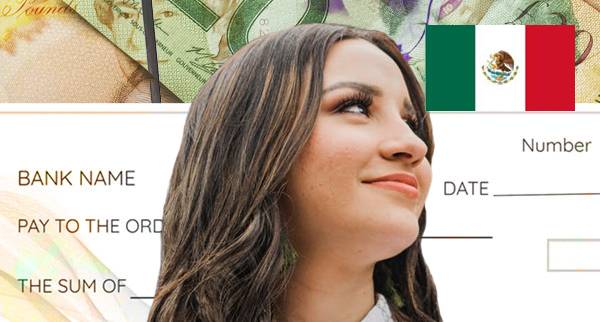
 Visit XE Money Transfer
Visit XE Money Transfer
Used By: 280000000
Currencies Available: 76
Transfer Fees: none
Payment Methods: Bank transfer, credit card, debit card
iOS App : yes, Android App : yes
LiveChat:
Min Transfer: US$1.00
Max Transfer: US$500,000.00 (or equivalent)
Year Founded: 1993
 Visit Wise Multi-Currency Account
Visit Wise Multi-Currency Account
Used By: 11000000
Currencies Available: 54
Transfer Fees: 0.5%-1%
Payment Methods: Bank transfer, debit card, credit card, SOFORT transfer
iOS App : yes, Android App : yes
LiveChat:
Min Transfer: 1 USD
Max Transfer: 1000000 USD/transaction/day (personal), 3000000 USD/transaction/day (business)
Year Founded: 2011
 Visit Remitly
Visit Remitly
Used By: 3000000
Currencies Available: 63
Transfer Fees: 0-3.99$
Payment Methods: Bank transfer, credit/debit card
iOS App : yes, Android App : yes
LiveChat:
Min Transfer: US$1.00
Max Transfer: US$20,000.00
Year Founded: 2011
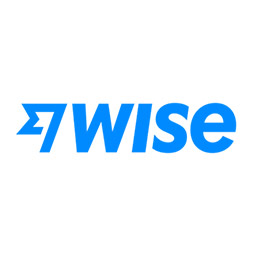 Visit Wise Business
Visit Wise Business
Used By: 11000000
Currencies Available: 55
Transfer Fees: 0.5%-1%
Payment Methods: Bank transfer, debit card, credit card, SOFORT transfer
iOS App : yes, Android App : yes
LiveChat:
Min Transfer: 1 USD
Max Transfer: 1000000 USD/transaction/day (personal), 3000000 USD/transaction/day (business)
Year Founded: 2011
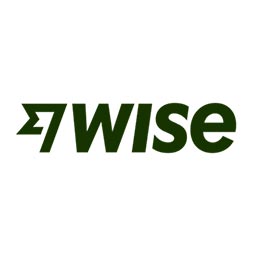 Visit Wise
Visit Wise
Used By: 11000000
Currencies Available: 54
Transfer Fees: 0.5%-1%
Payment Methods: Bank transfer, debit card, credit card, SOFORT transfer
iOS App : yes, Android App : yes
LiveChat:
Min Transfer: US$1.00
Max Transfer: US$1,000,000 (varies based on currency)
Year Founded: 2011
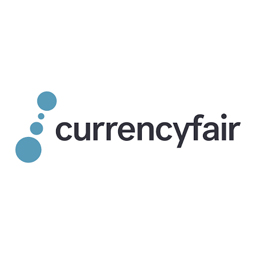 Visit CurrencyFair
Visit CurrencyFair
Used By: 150,000
Currencies Available: 17
Transfer Fees: 0.45%
Payment Methods: Bank transfer, debit card
iOS App : yes, Android App : yes
LiveChat: yes
Min Transfer: £5.00 (or equivalent)
Max Transfer: £10,000,000.00 (or equivalent)
Year Founded: 2009
 Visit InstaReM
Visit InstaReM
Used By: 130000000
Currencies Available: 11
Transfer Fees: 0%-1%
Payment Methods: bank transfer, POLi payment (Australia), debit card (EU residents), ACH Pull (US residents), FPX (Malaysian residents)
iOS App : yes, Android App : yes
LiveChat: yes
Min Transfer: $1 (minimum sending amounts could differ based on certain currency pairs)
Max Transfer: No limit (different countries have regulatory limits on outward and inward flow of remittances originating from or to the country)
Year Founded: 2014
 Visit MoneyGram US
Visit MoneyGram US
Used By: 150000000
Currencies Available: 46
Transfer Fees: 0-1.99$
Payment Methods: pay by card or directly from your bank account
iOS App : yes, Android App : yes
LiveChat:
Min Transfer: none
Max Transfer: 3000 USD
Year Founded: 1940
 Visit Xoom
Visit Xoom
Used By: 250000000
Currencies Available: 4
Transfer Fees: 0$-40$
Payment Methods: Bank transfer, debit/credit card, PayPal balance
iOS App : yes, Android App : yes
LiveChat: yes
Min Transfer: US$10.00
Max Transfer: 2999 USD/day, 6000 USD/month, 9999 USD/3 months
Year Founded: 2001
 Visit Skrill
Visit Skrill
Used By: 120,000
Currencies Available: 33
Transfer Fees: none
Payment Methods: Cash, bank transfer, debit card, credit card, e-wallet, cryptocurrency (depending on country)
iOS App : yes, Android App : yes
LiveChat: yes
Min Transfer: US$1.00 (varies based on certain currencies)
Max Transfer: US$2,500.00 / day (weekly and monthly limites also apply)
Year Founded: 2001
 Visit Scotiabank
Visit Scotiabank
Used By: 25,000,000
Currencies Available: 23
Transfer Fees: none
Payment Methods: Bank transfer, debit card, credit card, apple pay, google pay, Scotiabank Saddletone gift cards
iOS App : yes, Android App : yes
LiveChat: yes
Min Transfer: none
Max Transfer: 10000 USD
Year Founded: 1832
 Visit OFX
Visit OFX
Used By: 1000000
Currencies Available: 54
Transfer Fees: 15 AUD below 10k AUD
Payment Methods: ETF, BPAY (Australia), Direct debits
iOS App : yes, Android App : yes
LiveChat: yes
Min Transfer: 1000 USD
Max Transfer: none
Year Founded: 1998
 Visit Credit Suisse
Visit Credit Suisse
Used By: 1000000
Currencies Available: 1
Transfer Fees: none
Payment Methods: eBill, QR-bill, standing orders, payment orders, online & mobile banking, direct debit, multi-payment orders, bank transfer, debit card, credit card
iOS App : yes, Android App : yes
LiveChat: yes
Min Transfer: none
Max Transfer: none
Year Founded: 1856
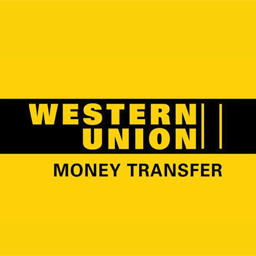 Visit Western Union
Visit Western Union
Used By: 15000000
Currencies Available: 38
Transfer Fees: up to 3%
Payment Methods: Cash, bank transfer, debit card, credit card (varies from country)
iOS App : yes, Android App : yes
LiveChat:
Min Transfer: $1.00
Max Transfer: $10,000.00 (varies)
Year Founded: 1851
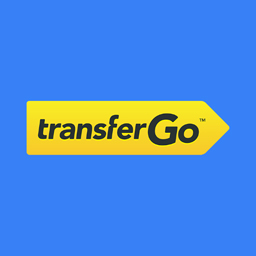 Visit TransferGo
Visit TransferGo
Used By: 2,500,000
Currencies Available: 39
Transfer Fees: 0.5%-1.5%
Payment Methods: Bank transfer, debit card, credit card
iOS App : yes, Android App : yes
LiveChat: yes
Min Transfer: 1.5 GBP
Max Transfer: 1000000 GBP
Year Founded: 2012
 Visit Moneycorp
Visit Moneycorp
Used By: 15000000
Currencies Available: 161
Transfer Fees: none
Payment Methods: debit card via our online platform or a wire transfer, cash
iOS App : yes, Android App : yes
LiveChat:
Min Transfer: 50 USD/GBP/EUR
Max Transfer: none
Year Founded: 1962
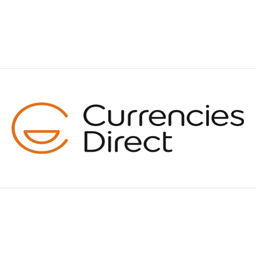 Visit Currencies Direct
Visit Currencies Direct
Used By: 325,000
Currencies Available: 22
Transfer Fees: none
Payment Methods: Bank transfer, debit card
iOS App : yes, Android App : yes
LiveChat: yes
Min Transfer: none
Max Transfer: 25000 GBP
Year Founded: 1995

A foreign cheque is issued in a foreign currency to an Mexican resident and payable at a non-Mexican bank. A recipient in Mexico may receive one of these cheques in Australia. This process can take weeks and can be costly in Mexico. The payment process is called collection. When you receive a foreign cheque in Mexico you must return it to the issuing bank. You must contact the issuing bank if you need help to make this payment.
Once you deposit a foreign cheque into an Mexican bank account, it will be held for fourteen to sixteen days, depending on the bank in Mexico. Only then can you withdraw the money from it? While this may seem like a hassle, it is essential to remember that you will have to wait for it to clear before you can use it. When you receive a foreign cheque in Mexico you must pay the associated fee.
Whenever you receive a foreign cheque in Mexico you must ensure it clears. The clearing process involves transferring the amount from the sender's account to the Mexican cheque receiver's account. Clear a cheque in Mexico usually takes one to two business days, though the timeframe varies. You can withdraw the money once a foreign cheque in Mexico is cleared. However, this can be frustrating if you need the cash quickly. You can deposit the funds into your domiciliary Mexico account if you have the funds available.
The first is payment by negotiation in Mexico. Regarding accepting foreign cheques in Mexico there are a few different options. The first option is to cash the cheque in Mexico at a post office or bank. The bank in Mexico will need to clear the cheque, which can take weeks or even months.
If the cheque In Mexico is made from a foreign currency, it must be paid through a collection service. This option is slower than cheque negotiation, which takes weeks or months. A customer's account in Mexico may be overdrawn, so they must repay the bank. Alternatively, they can pay by bank transfer. To pay by cheque in Mexico you must provide your account details to your bank.
Payments by negotiation in Mexico is a popular payment method for most small businesses. However, in Mexico it is only sometimes practical. It is best to consult a lawyer before negotiating with your customer. This processing can be tricky in Mexico and requires a strong business strategy to ensure success. In most cases in Mexico a good business strategy is to reward loyal customers with better payment terms. It is helping to maintain solid operational cash flow and ensure the recurrence of orders. If a customer's invoice is past due in Mexico it is essential to appease tensions, as this can become non-payment.
If you receive a cheque in Mexico through negotiation, you will get it quicker than if you use the regular deposit method. Your Mexico bank will credit your account in a few days, even if the cheque bounces. You can only negotiate a foreign cheque in Mexico if it is written in the same currency as the country of origin. Otherwise, you will have to pay a fee. A good negotiation service in Mexico will let you know how long it will take for your payment.
If a payment is delayed in Mexico the payer can submit a collection order. The payer must present this order to the beneficiary's bank in Mexico to get the funds. The order is valid for ten days after it is issued. This process in Mexico is faster than payment by negotiation and is the best option for same-currency cheques. In addition, it is more convenient than paying in cash. However, payments by collection in Mexico can be time-consuming, so you should be prepared to wait longer before you can get your money.
Once the bank receives the cheque, the recipient's bank in Mexico will credit the account within days. Alternatively, in Mexico the recipient's bank will remove the funds from the cheque if it bounces. The only difference between the two methods in Mexico is that payments by negotiation are only possible with foreign cheques written in the country of origin. For example, a foreign cheque written in the US dollar would not be eligible. As with all collection methods, there is a fee for this service.
When sending international cheques to Mexico you should always check the currency's exchange rate. Otherwise, the money may need to be exchanged properly in Mexico resulting in a dishonoured cheque. While this is not common, it is essential to remember that if you receive a cheque with an incorrect exchange rate in Mexico you will be asked to return it.
To deposit an international cheque in Mexico you must contact a bank in your home country to process the transaction. Most banks in Mexico have a process that allows you to deposit your cheque in a foreign currency. Forience cheque processing can take a few days to weeks in Mexico. If the cheque is worth more, you may have to wait until it clears. In some cases, you will have to pay a fee.

The clearing process is the movement of funds between the two parties of a trade. It is a vital part of the banking system in Mexico. Typically, cheques drawn from one bank are deposited in another bank. When a customer deposits a cheque at another bank, the deposit bank receives the funds and then requests a special cheque clearance in Mexico. After the required time, the funds are made available to the depositor. This process generally takes three business days. However, if the amount of a cheque in Mexico is more than that, it may take longer, which is where the Clearing Process comes in.
A foreign cheque in Mexico typically takes two to fifteen days to clear and physically transfer to the bank in the country of origin. A bank has no control over how long it will take to clear a foreign check, and the overseas bank may have a different exchange rate than a UK bank. The exchange rate in Mexico may have changed between the cheque's presentation date and the actual clearing of the money.
Once the cheque has been received In Mexico, it must go through the clearing process. This process involves transferring funds from the sender's account in Mexico to the receiver's account. An Mexican domestic cheque usually clears within one to two days. A foreign cheque, however, may take up to several weeks to clear. If you wait too long, you may even have to pay a fee.
Most banks in Mexico accept foreign checks, but not all do. Some require you to deposit the cheque with your local branch in Mexico, while others only take foreign currency cash letters. A cash letter is a convenient option if you are trying to deposit a foreign cheque, but it has conditions. You need to apply for a credit limit in the country on which the cheque is drawn, but it is still better than nothing. EBC sends the item to your Mexican bank and then proceeds with the collection process when the thing has cleared. The collection time varies by country, but it usually takes four to eight weeks.
Some Mexican banks accept foreign cheques on a cash letter, but only if they take them in their country. Alternatively, you can send a cash letter if your foreign cheque is drawn from a foreign bank. In this case, you must apply for a credit line with the Mexican bank. This alternative solution is more efficient, but you must be sure that the Mexican bank you are dealing with will give you a credit limit for your cheque.
One crucial thing for Mexican residents to remember is that foreign cheques must go through the collection process in Mexico before you can cash them. Your foreign cheque will be held until the funds are cleared. If the money in your Mexico account is in another currency, this will cause additional delay. You can negotiate to use your funds before the cheque clears. If you cannot wait for this process, you can always cash it at a bank. Another reason to refrain from cash a foreign cheque at a post office in Mexico is that you need an Mexican local bank account. If you do not have a local bank account, you can have the cheque deposited into your account. However, this process will be lengthy and will incur additional fees. Additionally, you may have to pay a processing fee for cashing the foreign cheque. The cost will depend on the check amount, the Mexican bank's policy, and the bank's policies.
Yes, you can. The only difference is that you must bring your cheque to an Mexican institution that accepts such transactions. This type of ATM withdrawal is the easiest way to deposit a foreign cheque. When you deposit a foreign check at an Mexican ATM, the deposit will be held until the cheque clears. If you want to withdraw the money immediately, you can deposit it into an Mexican bank account.
If you have a foreign cheque, you must ensure the Mexican bank clears it before depositing it in your local currency. Finding an ATM in your local country that accepts foreign cheques is possible. However, you will likely need to withdraw the money before using it for other purposes. In these cases, you will want to use an Mexican bank that specializes in accepting foreign cheques.
One method is to wait for the cheque to clear at the Mexican bank where the recipient lives. This process usually takes about a day but can take several weeks. Some countries recall funds once cleared; you must pay an extra fee. In the case of a foreign cheque, you can cancel the cheque after six months to avoid incurring additional costs.
A foreign cheque in Mexico has two options for cashing. The first is payment by collection. This option is only available when the country of origin differs from the country of destination. The process can take a few weeks or even longer if the country and currency differ. Mexican nationals may have to pay an extra fee for this option, and the money is not refundable after six months. When you are ready to cash your check, you must decide how to transfer it. If you plan to send it overseas, it is best to wait until the process ends.
The first step is to locate an Mexican ATM that accepts checks. Many Mexican ATMs will only accept cash, which means you need a bank account. In addition, some will not accept deposits or cash. You should always be aware of your surroundings, especially at an unfamiliar ATM. If you are uncomfortable, it is not a good idea to withdraw some money. The most common requirement is a valid Mexican photo ID.
Next, you must know how to read a cheque. The amount on the cheque is the amount. You will need to know the currency's denomination and the drawee. This information is usually preprinted on the cheque. You must be sure the money is written in words and figures. It is important to remember that it is an Mexican local currency, even if it is written in a foreign one.
Although they issue cash, Mexican banks wait to provide any value. Their service is to create a deposit account for the borrower, which the borrower can then draw money from by cheque. Demand deposits are another form of money that an Mexican bank offers. Unlike savings accounts, demand deposits are a valuable way for Mexican banks to increase the quantity of money in circulation. Commercial Mexico banks also act as agents for their customers, collecting cheques, paying dividends, interest warrants, utility bills and rent.
In the simplest terms, Mexican banks do not provide cash loans. They create a deposit account for the borrower, which they use to pay back their customers. Then, they use this Mexico account to issue money. The banks in Mexico also use it for other purposes, such as making mortgages, selling securities, and servicing customer accounts. Commercial Mexican banks are serving their customers as agents by providing these services. They assist customers in collecting cheques, paying dividends, interest warrants and even paying utility bills and rent.
If you are paying a cheque in a foreign currency, you may wonder if the exchange rate in Mexico will affect the value of the cheque. The answer is yes. The exchange rate in Mexico that you use when paying a cheque will depend on the value of the individual currencies.
Before you send a foreign cheque, you should consider its currency. Using foreign currency to pay a cheque is very risky because the Mexican bank may not be able to accept it. In addition, you may have to wait for a few weeks for the funds to clear. If you are paying a cheque in a different currency, send it through a postal service rather than an electronic method. The best way to make payments is to pay bills electronically and avoid the hassle of waiting for an Mexican bank to transfer funds.
Foreign cheques must pass through the clearing process, which involves transferring funds from the receiver's Mexico account to the sender's Mexico account. Typically, this takes one to two days. However, this process can take much longer if the cheque is made in a foreign currency. You can always use a cash letter service if you are still waiting to cash your cheque. EBC will then send the item to the Mexican bank and proceed with the cash. The collection period varies, but it typically takes four to eight weeks.
Once you have found an Mexican bank that offers the best foreign cheque-clearing service, check out their other offerings. These options will save you a few extra AUD in the long run. While there are many options, a cash letter will be best if you cash a foreign cheque. It is also important to remember that when you pay for a cash letter, you are transferring the money to the Mexican bank. It would help if you ensured that the Mexican bank you choose has a sufficient credit limit for the cash letter to be processed successfully.
There are many different methods for cashing foreign cheques in Mexico, but cashing a foreign cheque at an Mexican bank usually costs up to 5% of the value of the cheque, and the clearing process can take a few days or weeks. In many cases, you can negotiate against the issuer and get more money, but this can be time-consuming and frustrating.
The main downside to using an Mexican bank is that foreign cheques often need to be more accepted. The Mexican bank must physically send the cheque to the country where the cheque was issued. In addition, it may need to be clarified and processed on the same day as the Mexican bank. Additionally, the foreign bank may be charging its exchange rate, and the exchange rate could have changed between the date the cheque was presented and when it cleared.
When sending money abroad, you must know how to send the money in the correct currency. The first step is to log on to your Mexico bank's website. Select the international money transfers section. You will need the recipient's name, Mexico account number, IBAN, and SWIFT/BIC codes. Once you have these details, you can set up the payment. If you send money to a foreign country outside Mexico, it is essential to know any limits.
Most international money transfers in Mexico are made via wire transfer. This method is the fastest and most expensive and depends on the destination in Mexico and currency. SEPA payments are a cost-effective option if you are sending to a recipient in the Eurozone. When sending money to another EU member, you will need to know the Mexico IBAN account number of the beneficiary.
The most common method of international money transfers in Mexico is wire transfers. Although this method is the fastest, it can also be more expensive. The rate of wire transfers in Mexico depends on the destination currency pair. If you send money to an Mexican bank account in the Eurozone, you will likely find a more affordable option using SEPA payments. The fees associated with these methods are minimal compared to other options, and they are usually the only way to send money overseas.
There are a few different types of Specialty Money Transfer Companies in Mexico. Some are better for international transfers than others, and you may consider one if you are travelling outside of Mexico or have no credit card access. For example, MoneyGram is better for international transfers than Western Union in Mexico. However, it is still possible to use cash in certain countries. Currencies Direct offers free transfer services and low exchange rates. You can easily set up an Mexico account online or with a mobile device. The only downside to Currencies Direct is that it only handles transfers into 20 different currencies. If you are worried about stealing money, try another money transfer company. If you choose an Mexican bank, ensure they offer secure money transfers.
We list reviews for the best money transfer services for cashing foreign cheque money in Mexico you can check out some of the best Mexico money services below.
If you would like to see XE Money Transfer compared against some of the best XE Money Transfer alternative Mexico money tranfer services available right now you can do so by clicking on the links below.